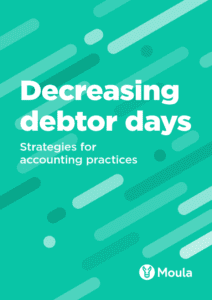White Paper Writer | White Papers for Business
Using the services of a white paper writer can be a very effective format to connect with your target market and build credibility through thought leadership. If you’re considering using a white paper for B2B marketing, this short guide covers the basics of business white papers and how they are used. It also looks at the purpose of white papers and the benefits they offer.
Why is it called white paper?
The term originated with the British government, and many people think that the first one (a defence white paper) was commissioned by Winston Churchill in 1922. In government settings, white papers present proposed government policies and often invite feedback before the policy is implemented or legislation is introduced.
In the early 1990s, businesses started creating white papers (sometimes spelled whitepaper) as a way to their products and services. This is not done with a hard sales approach (as you might find in a brochure, landing page on a website or other sales pitches) but positions the business as a subject matter expert. As part of a content marketing strategy, this form of long-form content can be used as a marketing tool to generate leads, with the ultimate goal of winning new customers.
Types of papers
There is no universal agreement on this. Some experts believe there are types of white papers, while others use broader definitions and define a much smaller number.
The White Papers for Dummies Book is a helpful reference that keeps it simple with three broad categories:
- Characteristic/Backgrounder – this provides an in-depth overview of the features and benefits of certain products or services, and is targeted at B2B buyers near the bottom of the sales funnel. It includes a factual description of the product or service benefits and supports a company’s position as a leader in its field. While it has a more sales-focused approach than the other types of papers, it should be low-key and avoid hype.
- Numbered/List – this type of publication provides a number set of points, tips, questions and answers about a challenge. Its approach is lighter and livelier and is aimed at attracting attention with provocative views. This approach is most effective to engage prospective customers during a complex sale to cast fear, uncertainty and doubt on competing solutions.
- Problem Solution – this type of whitepaper includes facts and logic to present a new solution to the customer’s problem. It’s aimed at B2B purchasers near the top of the sales funnel. As an industry white paper, it has a broad focus on an industry-wide problem. Unlike the Characteristic/Backgrounder, it doesn’t focus on the particular products or services that the business offers. Usually, this is done at the end with a call to action to get in touch to learn more.
Whatever style you choose, it’s best to keep it as simple as possible and clearly summarise the points you are making, including key takeaways that can help potential customers improve their understanding of the topic. In addition to effective writing, you will also want to ensure that it’s visually appealing. This includes using your brand colours and getting it professionally designed (not a simple Word document).
What’s included?
The contents will depend on the type you choose to create. For the Problem/Solution version, the outline recommended in the For Dummies book is:
- Table of contents
- Executive summary – a summary no longer than one page.
- Problem – go into detail about the problem and its impact. If you have research/data, include it to show the seriousness of the challenge.
- Existing solutions and shortcomings – give an overview of potential solutions and what they are missing.
- Recommended solution – how a product or service solves the problem.
- Case study – show how a customer overcame the problem by using the recommended solution.
- Buyer’s guide – this can show the positive and negative points of the potential solutions and how yours stands out as the best.
- Conclusion and call to action – a brief summary and next steps for getting the solutions you offer.
- About the company – an overview of your business with the points you typically include in a company profile.
Although this is not a business white paper template, it can be used as a guide to structuring your own paper. If you’re looking for B2B white paper examples, here’s one we wrote for a business finance provider. It looks at the issue of debtor days (the average time it takes a business to get paid after issuing an invoice) and how their service solves this problem. This is one example of a white paper that was used as marketing collateral as part of a larger campaign, including press releases and an email campaign, to build brand awareness.
Benefits of creating your own paper
Creating a white paper can benefit businesses, particularly in B2B (business-to-business) interactions. This strategic tool serves several purposes and offers numerous advantages:
Authority and Credibility: White papers enable you to establish yourself as a thought leader in your industry, demonstrating expertise and insight on specific topics. This authority can build trust with clients, stakeholders, and peers and differentiate the company from competitors.
Educational Marketing: Instead of overt promotions or sales, white papers create value by informing and educating the reader. Modern consumers who prefer to understand their challenges and potential solutions before making purchasing decisions appreciate this subtle form of marketing.
Lead Generation: Companies often attract potential customers searching for information or solutions to specific problems by offering white papers. Since white papers are often downloaded from a company’s website, they are valuable for gathering contact information from interested parties and generating qualified leads.
Content Marketing Strategy: White papers are crucial in content marketing strategies. They can be repurposed in various forms – blog posts, infographics, webinar topics, or short video scripts – helping to keep the content pipeline full and diverse.
Sales Enablement: Sales teams can use white papers to nurture leads along the buyer’s journey. A well-constructed white paper can address prospects’ common questions and concerns, easing the sales process and helping potential buyers make informed decisions.
Complex Problem Solving: For businesses offering complex products, services, or consultations, white papers allow for an in-depth presentation of the problem and solution, something other types of content cannot provide.
Influencing Policy or Industry Standards: In regulated industries, white papers can present innovations, best practices, or new strategies, potentially influencing policymakers or setting new industry standards.
SEO and Online Visibility: Including a paper on your website can improve SEO, especially if the content is high-quality, unique, and addresses topical industry concerns or keywords. This strategy can drive organic traffic, expanding a company’s online visibility.
Partnership and Networking Opportunities: Sharing insights through your paper can attract the attention of industry peers, potentially leading to partnerships, collaborations, or networking opportunities that might not have existed otherwise.
Customer Engagement and Trust: By helping customers understand complex issues, make decisions, and identify solutions, you demonstrate their customer commitment, building stronger relationships and trust.
A white paper should be well-researched, professionally presented, and without overt marketing language to maximise these benefits. The emphasis should be on providing real value to the reader through information, analysis, and insight.
Tips from a white paper writer
If you are writing a white paper, choose the type that best suits the audience and your solution. Once you’ve chosen the type, create an outline to guide you. Based on this outline, determine what content you will include. You might need to conduct some research to get the information needed. Large companies have the resources to conduct surveys to include insightful information. Your business might not be able to do this, so you can consider including existing third-party research. If you want to include case studies, you will need to interview your customers who have used your product or service to solve their problems.
If you don’t have the resources to create a white paper, you can consider white paper writers for hire. A professional white paper writer can help you kick start the process and make the paper a reality. As professional white paper writers, we’ve helped businesses across Australia with content creation, including white papers.
White paper graphic designers
The format is another important consideration. Those in your target audience reading your white paper will also judge it on how it looks. This is why high-quality formatting and graphic design are important. A good graphic designer will make it easy to read and include supporting graphs and illustrations. They will also work closely with the white paper writer to create relevant images for the project.
Ways to leverage your content with white paper B2B marketing
Once you’ve completed and designed the final publication, the next step is to leverage your white paper for B2B marketing. Things to achieve this include:
- Sending out media releases to relevant publications and websites.
- Using search engine optimisation to help people find the paper when searching online (find out more about SEO copywriting services). By getting people to opt-in by leaving a name, email address and phone number, you can follow up by contacting people to get their feedback and start a sales conversation.
- Repurposing the content in the white paper in articles and blog posts to generate website visitors and sales leads. This can include publishing sections for the white paper and including a link to the opt-in page where website visitors can download the full version.
Get in touch with a white paper writer in Australia
If you’re looking for a white paper freelance writer, we’ve assisted businesses across Australia with white paper writing services. Contact us on 1300 731 955 to discuss writing, designing and promoting your document.
Besides assisting with white papers, we offer:



